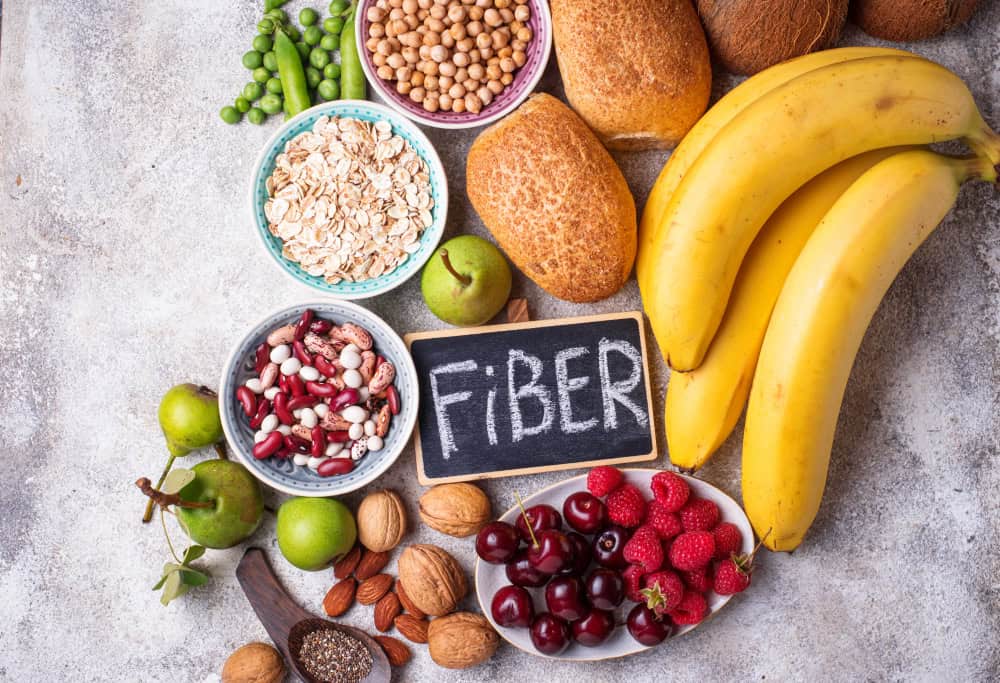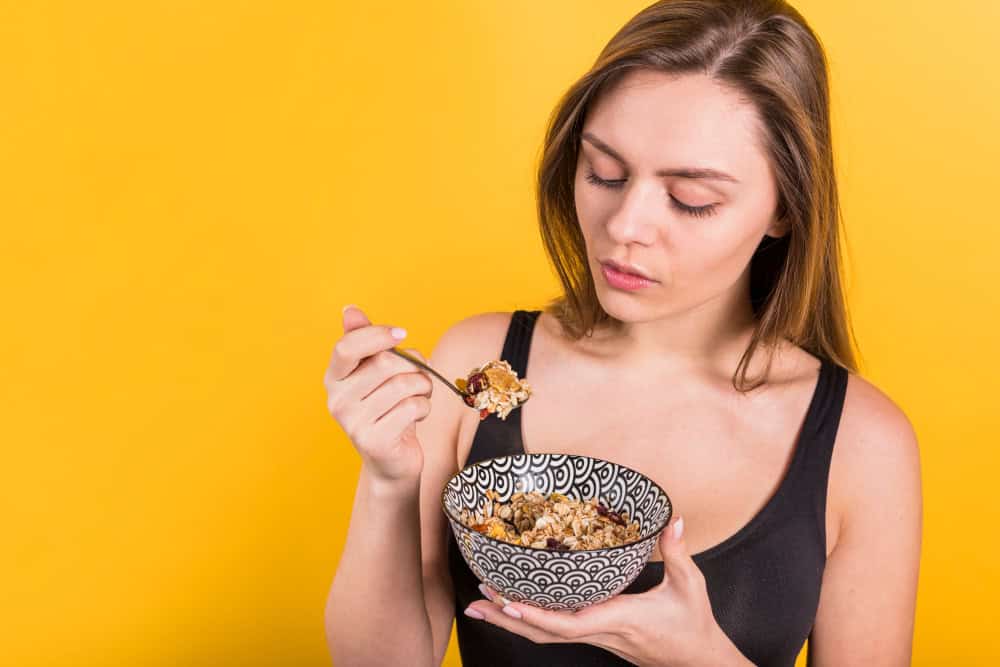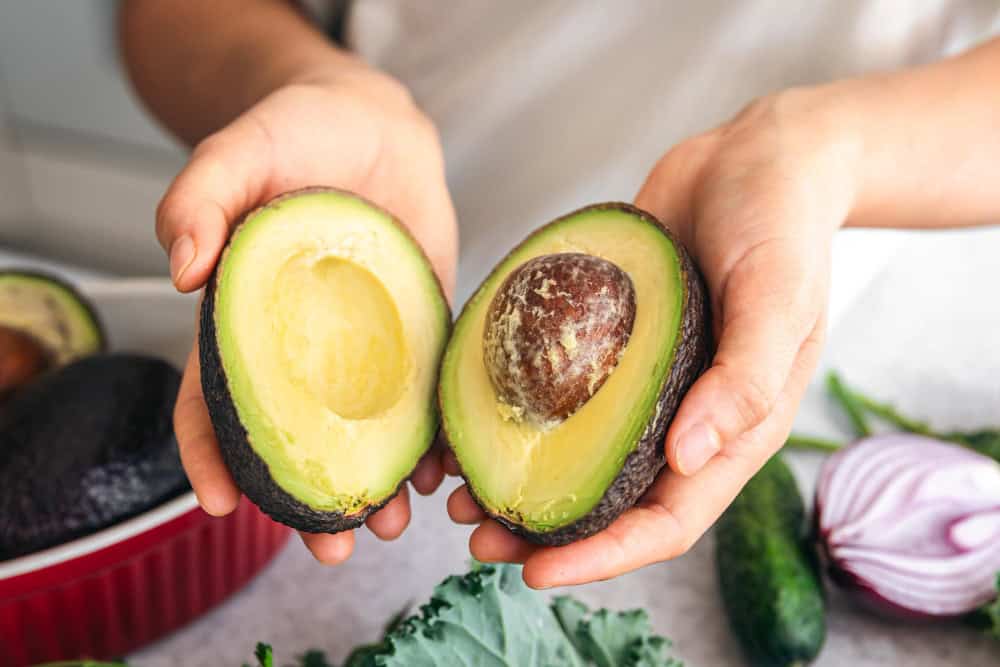
You’ve heard the buzz about healthy eating; now you can keep track of your protein intake, watch the sugar you consume, and try to limit your intake of processed foods. But there’s one important element that often doesn’t get the credit it deserves, fibre. We’ve all heard that fibre is important for us, but most of us ignore it until the digestive troubles hit us. Fibre is the unsung hero of a healthy diet, which keeps our digestion working smoothly, along with several other benefits for us. However, between coffee for breakfast, rushed lunches, and vending machine snacks, it’s easy to miss out on an adequate fibre intake. But it’s not something you’d want to miss out on. So here are 10 ways to add fibre to your diet.
Why is Fibre so Important?
Fibre is a type of carbohydrate that human bodies cannot entirely digest. Even though it sounds a bit odd, this indigestible nature of fibre is part of the reason why it is so important for us. Dietary fibre exists in two forms, soluble and insoluble. Soluble fibre dissolves in water and takes a gel-like consistency, which is known to help prevent blood sugar spikes and help lower your bad cholesterol. On the other hand, its insoluble sibling performs the task of adding more volume to stool, making digestion smoother and preventing constipation.

Eating sufficient fibre has been strongly linked to a decreased risk of heart disease, type 2 diabetes, and colon cancer. It also decreases the risk of constipation, and promotes a healthy gut flora, which is the bacteria that live in your intestines and affect everything from immunity to mood. In addition, fibre acts as a natural appetite suppressant by adding more volume to food and keeping the calorie count low. As a result, you will feel satisfied for longer and avoid overeating, which will support your weight loss objectives.
How To Increase Your Fibre Intake?

Above, we have discussed the important role of fibre for our bodies and why it is so important. Guidelines say that an average adult needs around 25-30 g of fibre in their daily diet. Despite this, most people do not get enough fibre to meet their daily requirement. Here are some simple ways to include more fibre in your daily diet.
1- Eat Whole Grains
One of the simplest ways to increase fibre intake is to switch from refined to whole grains. Barley, quinoa, oats, and whole-wheat bread are some of the good sources of fibre that you should try to eat more of. In addition to aiding in better digestion, whole grains prolong feelings of fullness, which lessens the desire to reach for unhealthy snacks. Choose products with at least 2 to 3 grams of fibre per serving and whole grains listed as the primary ingredient.
2- Love The Lentils
A popular food that is high in dietary fibre and delicious is lentils. They are a great complement to a well-balanced, health-conscious diet in addition to being reasonably priced and simple to prepare. Dietary fibre is present in considerable amounts in lentils. Lentils contain about 15 grams of fibre per cup, which is roughly half of what adults should consume each day. Because of their versatility, lentils can be used to make tasty lentil curries or added to soups, stews, and salads.
3- Go For Chia Seeds
When it comes to fibre content, chia seeds are a nutritional goldmine. 28 grams of chia seeds contain 10 grams of fibre, which is over one-third of the recommended daily consumption for people. Additionally, these small seeds are a great source of protein, antioxidants, calcium, magnesium, and omega-3 fatty acids. You may sprinkle them on yoghurt or cereal, mix them into smoothies or baked goods, or use them as an egg substitute in vegan dishes. Mamta Sharma, a dietician at Tata 1mg, suggests that adults consume 1–2 teaspoons of chia seeds per day. She also advises soaking the seeds before eating, as consuming them dry can sometimes lead to bloating.
4- Popcorn Is a Great Snack
Popcorn is a great choice when you’re craving something light and crunchy. Itis a whole grain that is quite high in fibre and low in calories when made without too much butter or oil, unlike fried treats like chips. Popcorn has roughly 4 grams of fibre per ounce, or 28–29 grams. Air-popped popcorn is a great way to stave off hunger because it’s high in insoluble fibre and low in calories.
5- Fruits Are Your Friend
While some fruits have much more fibre than others, most fruits are a healthy source. For example, there are about five grams of fibre in one tiny pear. A cup of raspberries contains 8 grams of fibre, while apples are another high-fibre fruit. Always choose whole seasonal fruits rather than fruit liquids because the juicing process removes almost all of the healthy fibre. The dietitian recommends including one bowl (about 150 grams) of seasonal fruits daily, ideally 30–45 minutes before lunch. This helps improve digestion and provides a rich source of fibre, vitamins, and antioxidants that support overall health and immunity.
6- Don’t Peel it
One of the simplest ways to increase your daily fibre intake is to leave the peel on while eating certain vegetables. For example, an apple consists of about 3.5 grams of fibre, but almost half of it is lost when you eat the fruit. Therefore, keeping the peel on while eating foods like zucchini, eggplant, apples, potatoes, etc, not only helps you increase your daily fibre intake but also saves you the trouble of peeling them. According to Dietician, that eating soaked almonds with the skin is beneficial, as the skin is rich in fibre, which supports healthy digestion. However, some elderly individuals may experience digestive discomfort; in that case, they can consume almonds without the skin.
7- Add Avocados
Avocados are incredibly nutrient-dense fruits that have become very popular in recent years because of their rich flavour, creamy texture, and many health advantages. Meanwhile, avocados contain an incredible amount of fibre, with roughly 7 grams per 100 grams. They can be used as an alternative to butter or mayonnaise in the diet. Alternatively, combine avocado with yogurt and other fruits to create a nutritious and creamy smoothie.

8- Use High-Fibre Flours In Baking
If you enjoy baking, an easy approach to increase your intake is to use fibre-rich flours like whole wheat, chickpea, or oat flour instead of regular all-purpose flour. White flour has less than 1 gram of fibre per half cup, while whole wheat flour has roughly 8 grams. These flours are excellent for adding fibre, additional nutrients, and a richer taste to muffins, pancakes, cookies, and breads. You don’t have to entirely remove white flour; you can start by replacing a portion of it in your favorite recipe.
9- Start Your Day Right
The ideal opportunity to increase your intake of fibre and balance your blood sugar levels for the remainder of the day is during breakfast. The idea is to select options that provide a prolonged release of energy. Choose high-fibre cereals, oats, or muesli, and for an added fibre boost, eat them with fresh fruits like apples, pears, or berries. In addition, you can incorporate a teaspoon of almonds, flaxseeds, or chia seeds into your smoothie or yogurt. Making even small changes, such as switching to whole-grain toast instead of white bread and adding mashed avocado and tomato on top, can significantly increase the amount of fibre in your first meal.
10- Supplement When It’s Needed
Whole foods are always the best source of fibre, but if you’re having trouble meeting your daily fibre requirements through diet alone or are experiencing certain digestive problems, fibre supplements may be useful. Psyllium husk, methylcellulose, and wheat dextrin are common fibre supplements. To prevent gas and bloating when taking a fibre supplement, start out with a tiny dose and raise it gradually over a few weeks. Additionally, to avoid any potential digestive problems, make sure you drink enough water.
Final Thoughts
Including foods high in dietary fibre in your regular meals can significantly improve your general health. Remember that long-term success requires making minor, sustainable changes to your lifestyle to get more fibre-rich. Increase your intake of high-fibre foods gradually by starting with one or two of them added to your meals. To support healthy digestion, don’t forget to drink lots of water. As your gut adjusts, you’ll notice a significant change in your energy, digestion, and overall health.
FAQs
1-How much fibre should I aim for each day?
Most adults should target around 25–30 grams of fibre daily. Including a mix of fruits, vegetables, whole grains, and legumes can help you reach this goal.
2-Can I get enough fibre without taking supplements?
Yes! With a balanced diet that includes fruits, vegetables, whole grains, legumes, nuts, and seeds, most people can meet their daily fibre needs naturally.
3-Will adding fibre cause bloating or discomfort?
A sudden increase in fibre can sometimes cause gas or bloating. It’s best to gradually add fibre and drink plenty of water to help your body adjust.
4-Can fibre help with weight management?
Yes! Fibre keeps you fuller for longer, helping curb cravings and reduce overall calorie intake. Including fibre-rich foods in meals can support healthy weight management.
5- How can I easily add more fibre to my meals?
Try simple swaps like whole-grain bread instead of white, adding fruits or veggies to meals, sprinkling seeds or nuts on yogurt, or including beans and lentils in your dishes.
(The article is written by Ehsan Siddiqui, Team Lead, Clinical Health & Content and reviewed by Monalisa Deka, Senior Health Content Editor)
Recommended Reads
No Gym? No Problem! Try These 6 Easy Pilates Exercises to Burn Belly Fat
7 Fish Oil Benefits For Heart Health